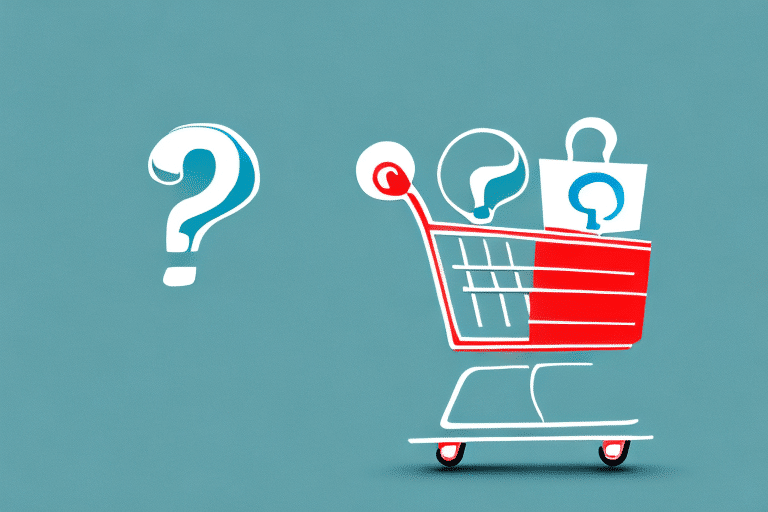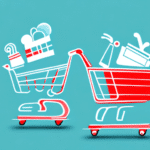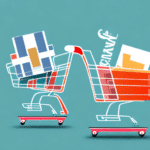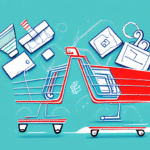How Many Abandoned Cart Emails Should You Send?
If you're running an online store, you're likely familiar with abandoned carts. Abandoned carts occur when customers add items to their cart but don't complete the purchase. This phenomenon presents a significant challenge for online retailers, resulting in lost sales and revenue. Fortunately, abandoned cart email campaigns offer an effective solution.
Why Abandoned Carts Are Costing You Money
High cart abandonment rates can significantly impact your store's revenue. According to a 2023 study by the Baymard Institute, the average cart abandonment rate stands at around 70%. This means that nearly seven out of ten potential customers are leaving without making a purchase.
Abandoned carts not only reduce your immediate revenue but also represent wasted advertising and customer acquisition costs. Additionally, a high abandonment rate can negatively affect your store's reputation. Customers who encounter issues like complicated checkout processes or unexpected costs may leave negative reviews, deterring future customers and harming your brand's image.
Understanding the Psychology Behind Abandoned Carts
Several factors contribute to cart abandonment, rooted in customer psychology. Common reasons include:
- Complex Checkout Process: A lengthy or complicated checkout can frustrate customers, leading them to abandon their carts.
- Unexpected Costs: Surprise fees, especially high shipping costs, can deter customers from completing their purchases.
- Indecision: Customers may be unsure about the product or hesitant to commit to a purchase without additional assurance.
- Distraction: Sometimes, customers are just browsing and never intended to buy initially.
Understanding these psychological triggers allows you to tailor your abandoned cart email campaigns effectively, addressing specific customer concerns and encouraging them to finalize their purchases.
The Benefits of Sending Abandoned Cart Emails
Implementing an abandoned cart email campaign offers numerous advantages:
- Recover Lost Sales: Reminding customers of their abandoned items can significantly boost conversion rates.
- High Engagement Rates: Abandoned cart emails typically have an average open rate of 45%, making them a potent tool for re-engagement.
- Automation Efficiency: These emails can be automated, saving time while ensuring timely follow-ups.
- Customer Insights: Analyzing responses to abandoned cart emails can reveal common obstacles in the purchasing process, allowing for targeted improvements.
- Personalization Opportunities: Tailoring emails to individual customer behaviors enhances the likelihood of conversion and fosters customer loyalty.
Setting Goals for Your Abandoned Cart Email Campaign
Before launching an abandoned cart email campaign, it's crucial to establish clear and measurable goals. Your objectives might include:
- Recovering Lost Sales: Focus primarily on increasing the number of completed purchases from abandoned carts.
- Enhancing Customer Loyalty: Strengthen relationships with customers by providing personalized follow-ups.
- Encouraging Up-Selling or Cross-Selling: Promote additional products that complement the items in the abandoned cart.
Once goals are set, segment your email list based on customer behavior, such as cart value, purchase frequency, or product types. This segmentation allows for more targeted and effective email content, increasing the likelihood of conversions.
Timing is also pivotal. Sending the first email within an hour of cart abandonment can capture the customer's immediate interest, while follow-up emails sent within 24 to 72 hours can remind them to complete their purchase without feeling intrusive.
Determining the Right Frequency for Your Emails
Finding the optimal frequency for abandoned cart emails is essential to avoid overwhelming customers while maximizing conversions. A common strategy includes:
- First Email: Send within the first hour after cart abandonment to capitalize on the customer's initial interest.
- Second Email: Follow up 24 hours later with a gentle reminder and possibly additional incentives.
- Third Email: Send 48 to 72 hours later, creating a sense of urgency or offering exclusive discounts.
However, it's important to tailor the frequency based on your audience and product type. Testing different schedules and analyzing the results will help determine what resonates best with your customers. For high-value or luxury items, spacing out emails might create a sense of exclusivity, whereas limited-time offers may benefit from more frequent reminders.
Crafting Effective Subject Lines That Encourage Opens
The subject line is the first interaction a customer has with your abandoned cart email. To increase open rates:
- Be Clear and Concise: Clearly convey the purpose of the email without unnecessary fluff.
- Use Personalization: Incorporate the customer's name or reference the specific product.
- Create a Sense of Urgency: Phrases like "Don't Miss Out" or "Limited Time Offer" can prompt immediate action.
- Include Emojis Sparingly: Emojis can make subject lines stand out but should be used appropriately.
Ensure that the subject line accurately reflects the email's content to maintain trust and avoid misleading customers, which can harm your brand's reputation.
Personalizing and Segmenting Your Emails for Better Results
Personalization and segmentation are key to enhancing the effectiveness of your abandoned cart emails:
- Personalization: Use the customer's name and reference the specific items left in their cart. Including product images and personalized recommendations based on browsing history can further engage the customer.
- Segmentation: Divide your email list based on factors like purchase history, cart value, or browsing behavior. This allows for tailored messaging that addresses the unique needs and preferences of different customer groups.
Implementing these tactics can lead to higher open rates, increased click-through rates, and ultimately, more conversions.
Using Discounts and Incentives to Encourage Conversions
Offering discounts and incentives can be a powerful motivator for customers to complete their purchases:
- Discount Codes: Provide a limited-time discount to encourage immediate action.
- Free Shipping: Removing shipping costs can eliminate a common barrier to purchase.
- Tiered Incentives: Offer increasing discounts based on the purchase amount to encourage higher spending.
It's important to use these incentives strategically to maintain profitability. Avoid overusing discounts, which can devalue your products and train customers to wait for sales.
Creating Urgency with Time-Limited Offers
Time-limited offers can create a sense of urgency, prompting customers to act quickly:
- Limited-Time Discounts: Offer discounts that expire within a specific timeframe to encourage swift action.
- Low Stock Alerts: Inform customers when items are running low to prompt quicker decisions.
Ensure that these offers are relevant and provide genuine value to the customer. Transparency about the terms and conditions of the offer, including expiration dates and any restrictions, is crucial to maintaining trust.
Measuring the Success of Your Abandoned Cart Email Campaign
Regularly assessing the performance of your abandoned cart email campaigns is essential for continuous improvement. Key metrics to track include:
- Open Rates: Measure how many recipients are opening your emails.
- Click-Through Rates (CTR): Assess how many recipients are clicking on links within your emails.
- Conversion Rates: Determine the percentage of email recipients who complete a purchase.
- Revenue Generated: Calculate the total sales attributed to your abandoned cart emails.
Additionally, analyze the time to conversion to understand how quickly customers are completing their purchases after receiving an email. Comparing revenue from customers who received the emails versus those who did not can provide insights into the return on investment (ROI) of your campaigns.
Use this data to refine your messaging, adjust the frequency of emails, and optimize your overall strategy for better results.
Best Practices for Crafting Effective Abandoned Cart Emails
- Clear and Concise Copy: Ensure your message is straightforward and easy to understand.
- Compelling Visuals: Include high-quality images of the abandoned products to reignite interest.
- Strong Call-to-Action (CTA): Make it easy for customers to return to their cart and complete the purchase with a prominent CTA button.
- Strategic Discounts: Offer discounts thoughtfully to encourage conversions without compromising profitability.
- Personalization and Segmentation: Tailor your emails to individual customer behaviors and preferences for maximum impact.
Timing is also crucial. Sending the initial email within an hour of cart abandonment can capture the customer's immediate attention, while follow-up emails sent over the next few days can serve as gentle reminders. However, avoid sending too many emails, which can lead to customer annoyance and potential unsubscriptions.
By following these best practices, you can create a compelling and effective abandoned cart email campaign that not only recovers lost sales but also enhances customer relationships and drives long-term business growth.




















